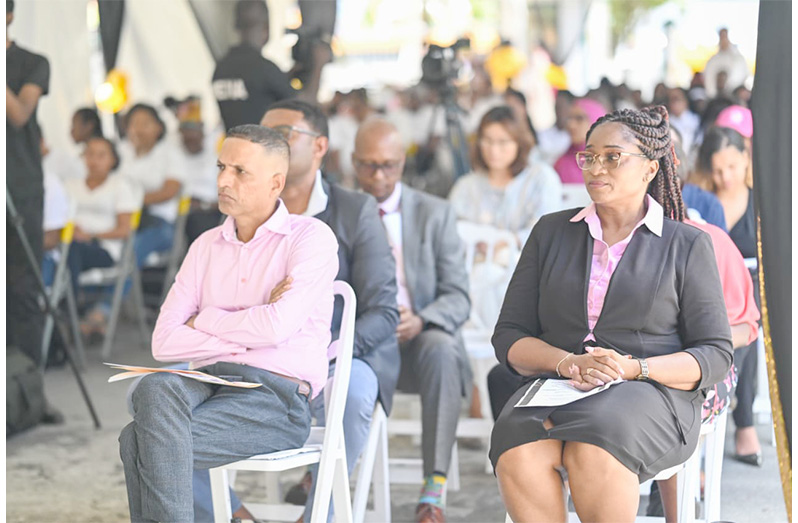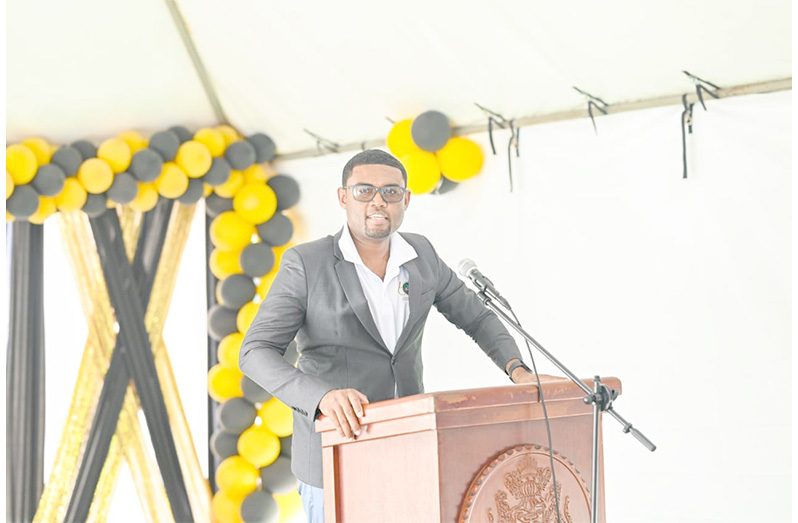THE Hydrometeorological Service of Guyana under the Ministry of Agriculture, on Friday, celebrated its 60th anniversary.
This milestone was shared with three members of staff who celebrated 50, 53, and 55 years of service respectively in the department.
The service was established on October 5, 1965, based on the recommendation of a World Meteorological Organisation’s representative. It was previously overseen by the Ministry of Works and Hydraulics and was handed over to the Ministry of Agriculture in 1992.

For six decades, the Hydrometeorological Service stood as a pillar of national service providing weather, water, and climate information to safeguard lives, strengthen agriculture, support aviation services, guide disaster management, among other notable services.
This year, the Hydromet is celebrating under the theme, ‘Advancing Our Services, Strengthening Communities.’
Chief Hydrometeorological Officer, Dr. Garvin Cummings, remarked that they are not only commemorating a milestone in the organisation’s history but are celebrating six decades of unwavering dedication to science, service and resilience to the Guyanese people, our regional community, and the global community.
Since its inception, the Hydrometeorological Service has played a critical role in shaping Guyana’s sustainable development pathway, Dr. Cummings said.
He stated further that from supporting local farmers in the hinterland, and across the coast, to safeguarding our coastal and hinterland communities from extreme events, guiding aviation, providing solid and credible information for energy generation, and their work in disaster management and preparedness, in public health, sports and recreation, their work has touched the lives of Guyanese every day.
Dr. Cummings noted, “Sixty years of service is not just a passage of time, it is a testament of purpose, perseverance, and the power of people working together for the common good. Over the past 60 years, we have evolved from basic observational capabilities into a relatively modern agency, equipped with cutting-edge tools, regional and global collaboration, and a complement of skilled professionals of whom I’m extremely proud.”
The Hydrometeorological Service has also been a proud contributor to the Regional and Global Hydrometeorological community, the Caribbean Meteorological Organisation, the World Meteorological Organisation, and the Montreal Protocol.
Dr. Cummings further stated that this anniversary is time to reflect on the Hydromet’s journey and to acknowledge the many persons whose commitment and expertise have built the foundation.
Emphasising that there are challenges posed by climate change, extreme weather events, environmental pressures, and environmental circumstances, he stated that although chaos appears to be intensifying, the need for accurate, timely, and accessible hydrometeorological services has never been greater.
“So, let this 60th anniversary not just be a celebration of our past, but a call to action for the future. Let us recommit ourselves, and as all of us, to strengthening our systems, building local capacity, and ensuring that no community guide is left behind when it comes to early warnings and climate resilience,” he emphasised.
In congratulating the Hydrometeorological Service, Minister within the Ministry of Agriculture, Vikash Ramkissoon, underscored that from the earliest rainfall records collected on the sugar estates in the 19th century, to today’s real-time weather stations and climate forecasting model, this incredible service has quietly and powerfully shaped Guyana’s national development.
“Whether it is agriculture, whether it is aviation, whether it is disaster preparedness or infrastructure work, it touches every sector. And in today’s world, where climate change is no longer a conversation or a distant threat, but it is a daily reality, the role of the services of Hydromet service has never been more critical,” Minister Ramkissoon said.
He highlighted that from 2020 to 2025, the government has invested more than $600 million in strengthening the Hydromet’s infrastructure and capabilities.
These investments, he said, are not just numbers, they represent lives protected, crops saved, flights made safer and communities better prepared.
Some of the projects invested in include the installation of new automatic weather stations in each region, and soon the deployment of two meteorological buoys in the maritime environment.



.jpg)








